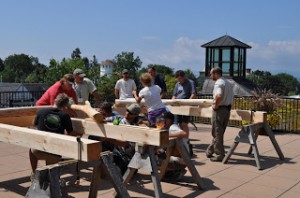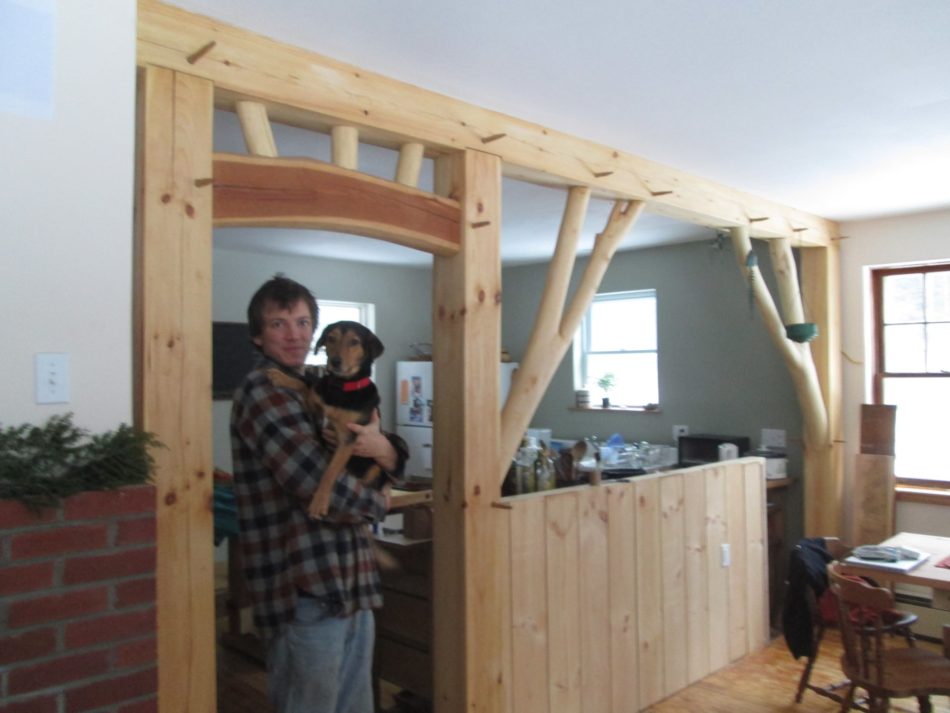The Timber Framer’s Guild of North America chose Champlain College in beautiful Burlington, VT this year as the venue for it’s annual conference. The conference was well attended and brought together a nice cross section of America, as the Guild tends to do. I shared the drive to a tour of the historic Shelburne Breeding Barn with a kindly scholar of historic Pennsylvania Dutch barns, the owner of a longstanding Timber Framing company from Maryland who seemed confused about the concept of a female timberframer, and a 4th generation sawyer from Vermont. The Conference was a flurry of fascinating events ranging from a gin pole raising to a presentation on Finite Element Analysis, a demonstration of a novel technique for scribing and cutting logs, and Timberhomes’ Josh Jackson teaching a riveting one-day scribe course.
In carpentry, scribing is a general technique for dealing with unusual surfaces. In timberframing, scribing is used to layout curved timbers that either join a flat surface or another curvy surface. The class was filled with experienced timber framers and Josh was able to jump right into describing a few different techniques, and then move the class outside to layout and cut round to straight and round to round joinery, and fit post bottoms onto rocks.
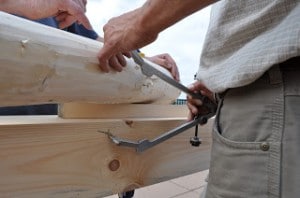
Bubble scribes transferring the flat surface of a tie beam onto the round surface of the forked brace. The resulting line will be the shoulder of the braces’ tenon.
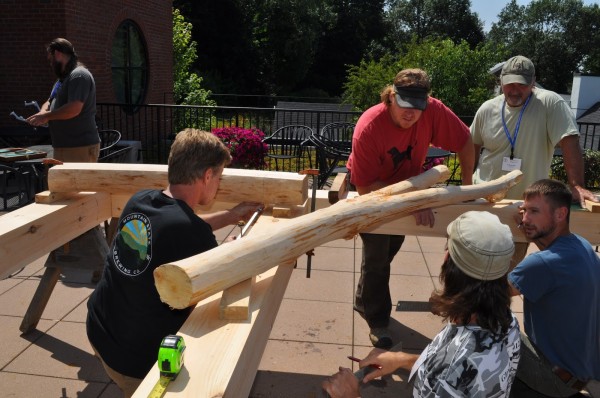
Participants place the tie (left) and forked braces on blocking directly above their final resting place.
The layout technique that Timberhomes employs uses bubble scribes- a set of pencil dividers with a bubble level which shows level in two directions simultaneously. Timbers are spread out horizontally on saw horses or blocking so that they are level, and positioned relative to one another as they will be in the finished building. Bubble scribes are then used to trace the shape of the surface of one timber onto the face of another.
Once these organic forms have been so carefully drawn, the next challenge is cutting curved lines. The circular saws typically used to cut shoulders on squared timbers are exchanged for thin bladed, Japanese style pull saws to cut the shoulders on a round beam. Where a chain mortiser simply rested atop the flat surface of a squared timber and braced itself against the adjacent surface with the tool’s fence, it sheds it’s fence and dons a longer fence parallel to the chains to be able to plunge into a round surface. It’s important to include lines representing plumb and level on the surface of your timber during the layout process to ensure that you have something to measure your cuts against.
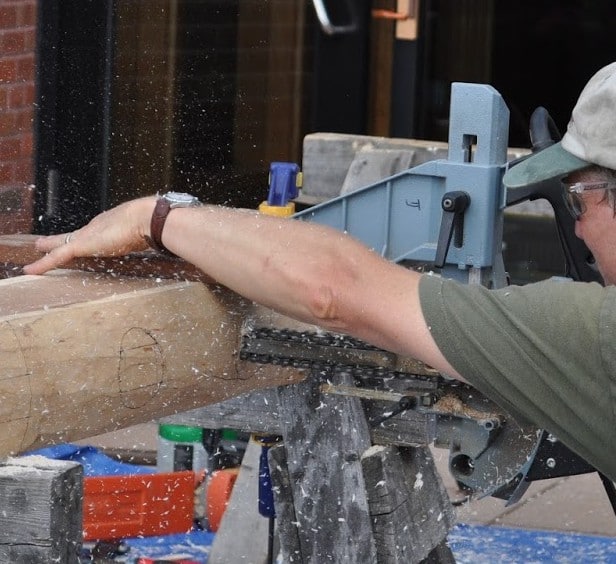
Using a different style of fence allows us to make mortises on a curved surface, while riding the flat surface with the fence
Josh often teaches a one-week scribing course at the Heartwood school. The project in this one-day guild workshop replaced a stick framed wall dividing the kitchen and dining room at the caretakers house in Hubbard Park, in Montpelier.
